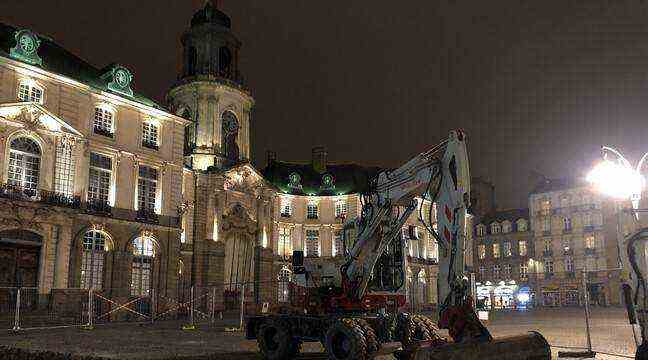The last time they had been removed was perhaps in May 1968 to be thrown at the forces of order. This week, it was in a much calmer context that researchers from the National Institute for Preventive Archaeological Research worked on the town hall square in Rennes. Engaged in a diagnosis prior to the planting of trees between the Town Hall and the opera, Inrap archaeologists have brought to light several burials. Human bones belonging to three or four bodies were discovered in the square, but also a piece of masonry, learned 20 minutes, confirming
information from West France.
Since Monday, two trenches have been opened in the square. Two others will be drilled next week to continue this diagnosis prior to tree planting. If the elements discovered by Inrap reveal a strong archaeological and heritage interest, a more substantial excavation site could be carried out. In the meantime, the discovered bones have been removed for closer study.
The discovery of bones is not surprising in this part of the city inhabited since the Middle Ages. Before the construction of the opera in the 19th century, burials had been found in the square, kept in schist chests.
Rennes has become accustomed to excavation sites in recent years. A very large number of bones, masonry and objects have been discovered under the former Jacobin convent, now transformed into a congress centre. The scientists notably got their hands on the body of Louise de Quengo, found in exceptional condition 350 years after her death. Buried in a lead coffin with the reliquary of her husband’s heart, the deceased was very well preserved. “We saw shoes, fabrics… The textile was still flexible, it was incredible,” explained Rozenn Colleter, an anthropologist at Inrap. The hair was still present, where one usually finds only bones and teeth.

